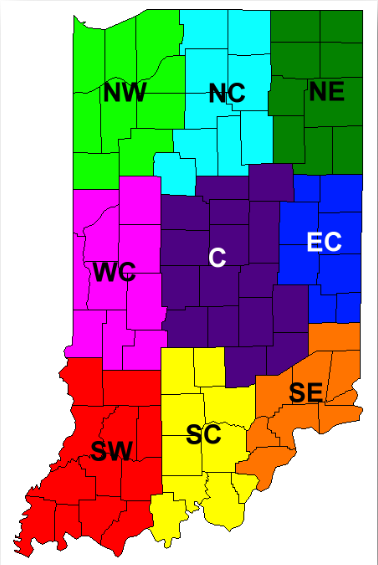MULTI–YEAR SUMMARY OF CORN RESPONSE TO NITROGEN FERTILIZER
This report summarizes corn yield response to fertilizer nitrogen (N) rate in field–scale trials conducted around the state of Indiana since 2006. These results are applicable to N management programs that use efficient methods and timings of N fertilizer application.
The Agronomic Optimum N Rate (AONR) represents the total amount of fertilizer N (including starter N) required to maximize yield, but not necessarily profit. The AONR in these trials varied among regions of the state from about 211 to 254 lbs N / ac, depending partly on soil organic matter and soil drainage
characteristics.
At five Purdue Ag. Centers where we conducted paired trials of corn following soybean (corn/soy) and corn following corn (corn/corn) from 2007 to 2010, the average AONR for corn/corn was 44 lbs greater than for corn/soy while average corn/corn yields were 18 bu / ac less than the corn/soy yields.
Economic Optimum N Rates (EONR) are defined as those that maximize dollar return from the nitrogen fertilizer investment. Because the yield benefits from additional N decrease as N rates approach the AONR, the EONR will almost always be less than the AONR. Region–specific EONR, calculated for various combinations of N fertilizer cost and grain price, are provided in the accompanying tables.
Click here to read the whole article.



